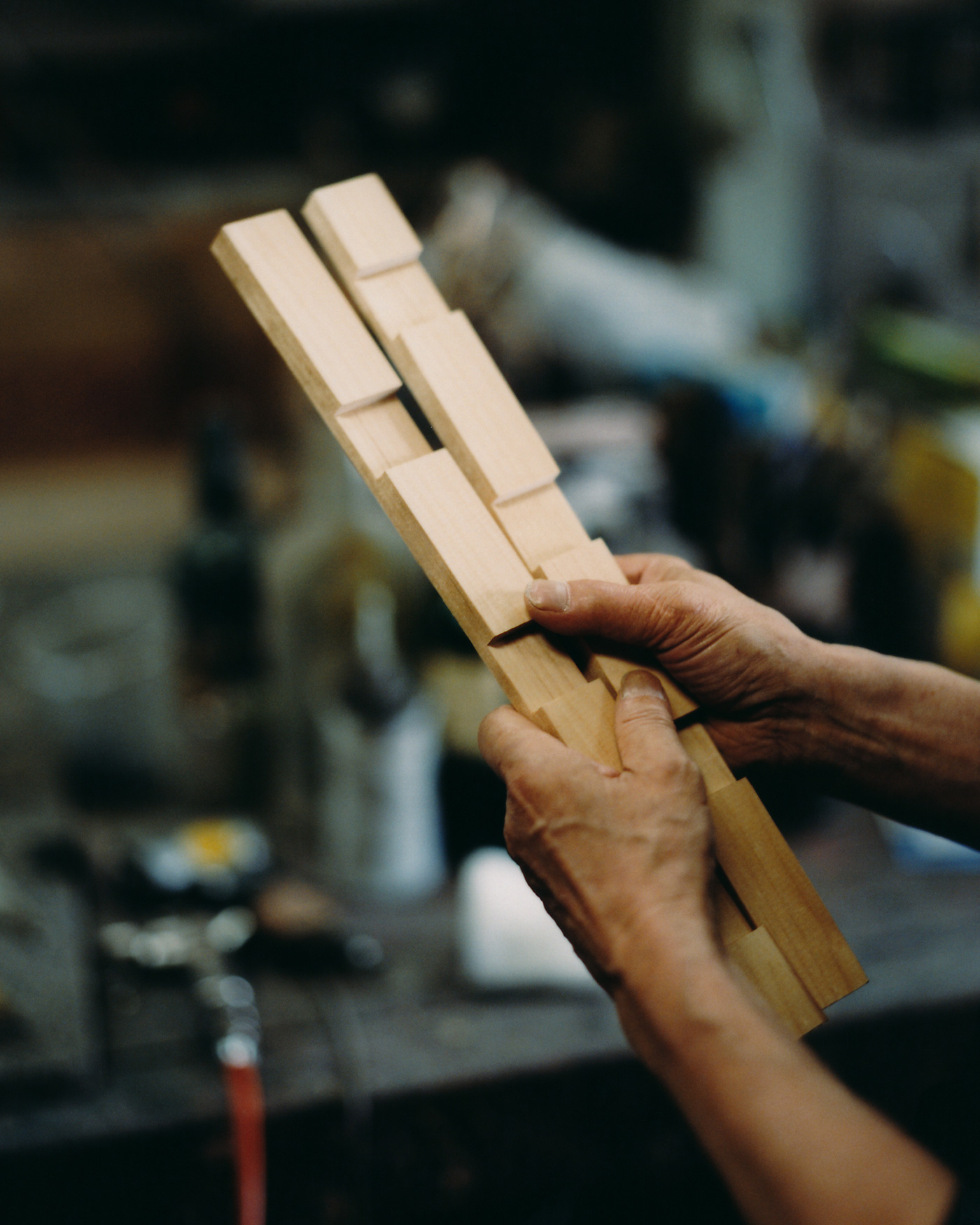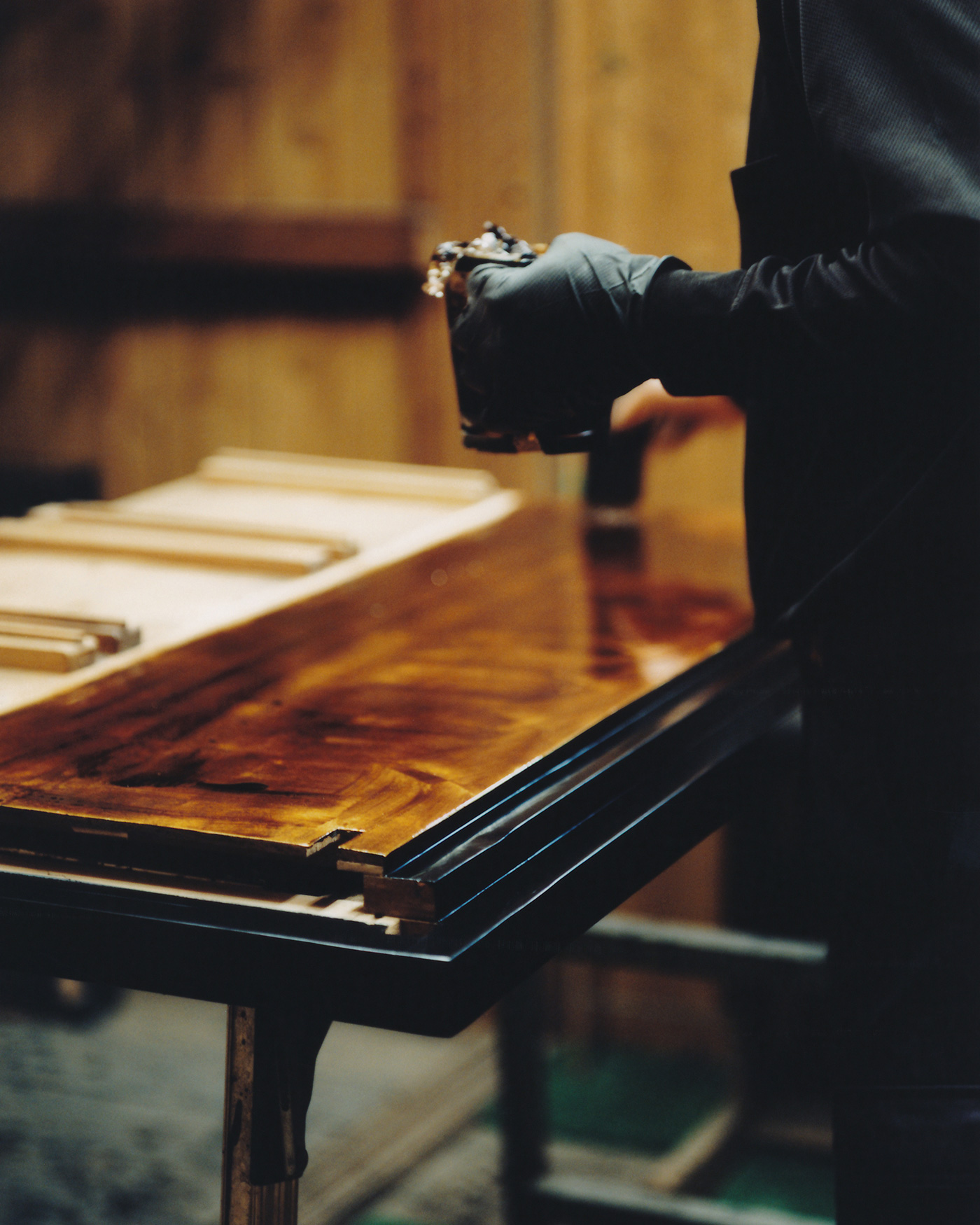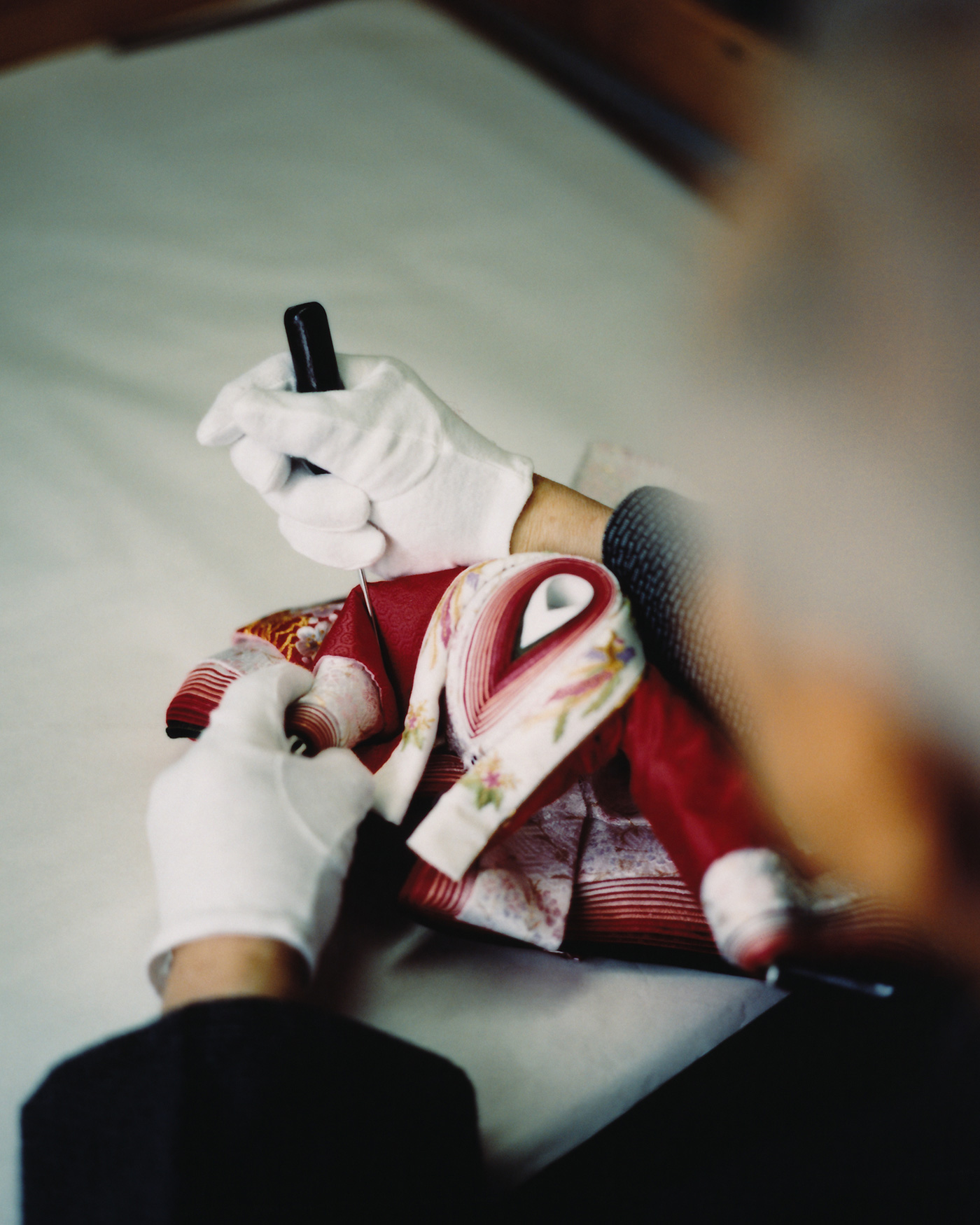Nagoya style Buddhist altars
OONOYA BUTSUDAN was founded in 1854, during the Edo Period (1603-1868 CE). As a Buddhist altar shop that carries Nagoya style Buddhist altars, they have now opened points of sale at department stores, street front locations, and now also in shopping malls, and currently operate ten stores. We spoke with the sixth-generation proprietor Tomohiro Yamada, who states as his mission working with traditional craftspeople across each step of the process of Nagoya style Buddhist altar production.

OONOYA BUTSUDAN was founded 169 years ago. Could you tell us a bit more about its development from then up to now, with ten locations open?
The first generation proprietor worked in manufacturing and retail in Sakae, Nagoya City. The growing transportation network led to retail stores opening up in rural areas, so by around the time of the third-generation heir, it seems the business had largely shifted to manufacturing and wholesale. Then, the fifth generation heir, who is the current president, further developed our retail store segment and opened a store in Kiyosu. Around the 2000s, we started offering points of sale in department stores, and in the 2010s, we opened large streetfront locations in Inazawa and Kitanagoya.
Has the manufacturing process been handed down through the generations unchanged since the company was founded?
We have a collaborative relationship with the craftspeople who make the products. OONOYA BUTSUDAN places orders with craftspeople to make the goods under certain parameters. Generally speaking, shops carrying Buddhist altars focus on the overall production and design process. We think about how to create an altar according to your budget, such as the type of item, the size, the type of urushi (lacquer), and other parameters. We then order it from a professional craftsperson and have it made. From what we understand, up to around the third and fourth generation, OONOYA retained exclusive craftspeople on its roster. In other words, there were people who could make a living just from the orders coming in through OONOYA. However, the number of such orders declined with the times, so this in-house production persisted only until about the mid to late 1960s.

The Nagoya style Buddhist altars you produce at OONOYA BUTSUDAN are made by artisans in an eight-step division of labor system called “hasshoku,” correct?
Yes, that’s right. When producing Nagoya style Buddhist altars, each step of the production process is handled by specialized artisans. There is a division of labor across eight disciplines, which are: woodturners, filigree detailers, carvers, painters, lacquerware artists, exterior hardware artisans, interior hardware artisans, and foil artisans. However, in fact there are three more essential artisans: the ones who create the roof of the altar housing, the lacquer polishers, and the assemblers, for a total of eleven disciplines. Based on OONOYA’s requirements, the woodturner makes the main body of the piece, the painter applies the urushi (lacquer), and the gilder applies gold leaf to it. Finally, one of OONOYA’s assemblers puts together the final piece.
So the process of making Nagoya style Buddhist altars is subdivided into different specializations. Is the system of eight professions described above unique to Nagoya style Buddhist altars?
There are various things that make Nagoya style Buddhist altars unique, such as the materials used, the construction, and ornate details, but the main point that is unique is the way a division of labor system is used.
For example, the painter is responsible for applying the urushi (lacquer), but this coating can then be further buffed and polished. In that case, they would give the work to a dedicated lacquer polisher. A dedicated artisan makes the ceilings on the altar housing. In the Nagoya style, the woodturner would not be responsible for both. By making specific requests to specialized craftsmen, we continue to improve upon these discrete processes and make the results better. That is the unique characteristic of Nagoya style Buddhist altars.

So OONOYA BUTSUDAN has helped preserve some artisan techniques through the projects it handles.
One of the qualities of Nagoya’s traditional crafts is their beauty and precision. We bring together professionals, help refine their skills, and ensure they are passed on to the next generation. Maintaining this relationship between OONOYA BUTSUDAN and the artisans ensures that each job is done properly. Ideally, one should be able to make a living pursuing a single field of the craft. For instance, woodturners can earn a living solely by focusing on that skill. Maintaining this ecosystem is part of our mission as a purveyor of Buddhist altars.
What is the significance of creating new products through this project in terms of the history of OONOYA BUTSUDAN?
Well, first of all, we want to foster a culture around Buddhist altars and get people interested; after all, they can’t be made without demand for them. There is absolutely value in Japan’s unique, delicate manufacturing techniques, so having products that drive awareness back to this core value within and without Japan is worthwhile. We had been thinking about what new products to try our hand at with a view to overseas clients, when we happened to be invited to join this project, so we were keenly interested in trying our hand at it.







